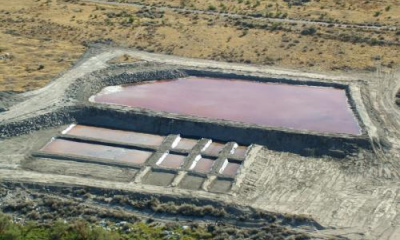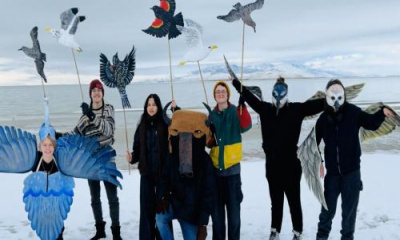Against the backdrop of lush marshes whistling along the shores of the Great Salt Lake at Farmington Bay, Utah House Speaker Brad Wilson worried the largest saline lake in the Western Hemisphere is a $32 billion problem waiting to happen — for all Utah residents.
The lake has exposed a thousand square miles of lake bed as it’s dwindling, dropping to its historic low in July.
That leads to toxic dust whipped up by winds, exposing Wasatch Front residents to harmful pollution.
Its indelible connection to mountain snowpack is fast fading, shortening ski seasons and jeopardizing water supplies.
“100% of our state is in severe drought and the lake is paying the price,” Wilson said.
A great lake, a great problem
The drying Owens Lake in California is the nation’s flashpoint for PM10 pollution, the kind that gets in your lungs and compromises public health.
There, officials have spent $2.5 billion to mitigate the dust, deploying a variety of creative methods to ameliorate the problem.
That’s where Wilson, R-Kaysville, comes up with his whopping $32 billion problem the Great Salt Lake poses because Owens Lake is just one-tenth the size of the Great Salt Lake.
“Everyone from Utah County to Box Elder County is exposed to that dust,” he said. “We are not at a point of no return; we’ve still got water in there.”
Wilson has an ironic relationship with the Great Salt Lake. A large chunk of the lake is in his district, so technically it is his largest constituent. The lake doesn’t vote, doesn’t contribute to campaigns and until lately it has been at a political and ideological disadvantage because the dominant philosophy has been water that gets there is wasted water.
This year, Wilson championed an effort to correct that long-enduring theme.
Under his leadership, the state passed his measure that set up a $40 million trust fund aimed at conservation and restoration to benefit the Great Salt Lake.
In one early December morning last year, Wilson took to a boat to get a close-up look at the lake. The experience was bone-chilling, wet and wild, but it inspired him to host a Great Salt Lake Summit the next month to brainstorm solutions for the ailing lake.
That session led to the $40 million trust that in part will help secure temporary water rights to help prop up the Great Salt Lake.
A drop in the bucket
Utah lawmakers put an historic amount of money into water conservation savings this last legislative session, a half-billion dollar investment to help water get to the Great Salt Lake and to help residents, businesses and industries conserve.
Wilson said it is a step in the right direction, but just a step.
There are plans to work this month with Utah’s congressional delegation, particularly Sen. Mitt Romney and Rep. Blake Moore, both of whom have proposed spending packages designed to help saline water bodies like the Great Salt Lake.
Another Great Salt Lake Summit is planned for Oct. 13 in Weber County.
The support of the Utah Legislature — which committed to a significant investment in conservation — tells Wilson the tide is turning when it comes to the opinions about the value of the Great Salt Lake.
But for him this is not a “one and done issue.”
“We have to make a consistent and concerted effort,” he said. “Make no mistake. We are just getting started.”







